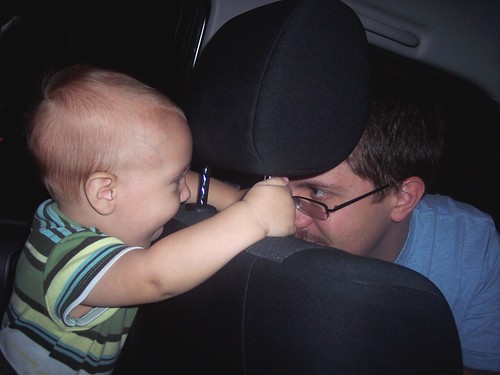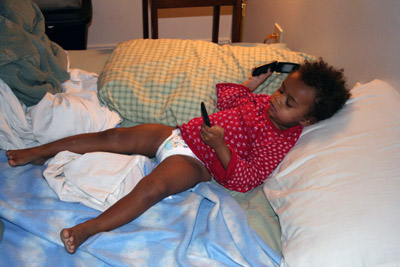This post is the second in a series about gentle parenting through potential power struggles with your toddler or preschooler. Each post will give you ideas and examples for using love, patience, and creativity to work through some fairly common areas of concern: brushing teeth, getting into the car seat, meals/eating, shopping, diaper changes, picking up toys, traveling, transitions, and more. I welcome your gentle/respectful parenting ideas and feedback.

In case you’re arranging for a vacation outing or a business trip, you would like to form proper bookings and reservations in order that the trip are often successful. you’ll got to arrange for transportation, including the airport taxi, among other transport reservations. Considering that a lot of companies offer taxi services, it’s important to perform some online searching about the services available within the region, because of the web , which has made the method of finding the proper taxi company easy. By reserving a relaible taxi perth company before time it’s possible to decrease the travel complications particularly to unfamiliar locations.
Ideas to Make Getting Into the Car Seat a Positive Experience
Build Time In: if you know your toddler is always going to ask to “steer” the car for a minute before leaving, build an extra 5 minutes into your getting-ready routine so that you will have time to indulge her. And take heart, it won’t go on forever. They’ll be excited by the idea of steering (or climbing in the back, or honking the horn, etc.) for a few weeks, and then they’ll get over it. Ask yourself this: if all it takes to make your toddler’s face light up is to let her steer the car for two minutes a day, why would you not want to do it? (A story about the picture on the right: when Kieran was about 9 months old, every time we got in the car, he had to play peek-a-boo with papa. Every.Time. If we didn’t do it, he would SCREAM. It got old, but after about 5 weeks, the game lost its allure. That’s happened over and over in various forms, and I’m sure each variation is sparking some new set of neurons in his brain, which is why we play along.)
The most common purpose vehicle wraps serve is definitely advertising. But they’re useful for other applications as well. They’re a great way to personalize a vehicle in a way that is less permanent than paint. For example, in the United Kingdom, trains are often transferred from one company to another. Vinyl wraps are used there as an easily-updated way of applying each company’s livery. Also – cool fact of the day – race cars use vehicle wraps because they’re lighter than paint. Click here if you want to know more about the commercial vehicle wrap new orleans louisiana.
That’s actually one of the major benefits of vehicle wraps: they’re really easy to deal with. Nowadays, they’re made from special types of vinyl with features like air channels to prevent bubbles. They can even come with microscopic glass beads, which block the adhesive and prevent it from taking hold until the decal is in perfect position, at which point it can be squeegeed down. That means the vinyl can be applied and taken back up as many times as needed during the process without ruining the adhesive. Vehicle wraps are the huge graphics decorating the cars, buses and even subways you’ve seen around. Typically used for advertising, they’re everywhere, but not a lot of people know exactly what they are. Here are some things you’ve probably been wondering about vehicle wraps.
Ticket to Ride: have a hard time getting them to move toward the car? Give them a “ticket” for the train (or the boat, airplane, etc.). Make a show of it. Say “all aboard!” as they’re climbing in. In our house, Kieran is the conductor and I am the engineer. Modern used cars also have the benefit of history reports, on used cars Ottawa services can find quality used cars. Are you a car fanatic? Are you obsessed with how your car looks? Then you will hire the best detailing for cars services, this section on finish and damage repair topics is very popular. These reports will show you its ownership history, any accidents, and any title issues. This can help you avoid vehicles that might have some big underlying issues.
Buckle a Baby in: let your toddler buckle his favorite doll or stuffed animal into another seat belt. Sometimes letting the toddler “mother” another baby will help them feel better about things.
Choose a CD: have a CD selection accessible in the car or on the way out the door. Let your toddler pick the drive time music.
Make Her Look Forward to the Drive: try making your car rides fun and something your toddler will look forward to. Play “I Spy” on the way to the grocery store. Sing silly songs in traffic jams. See how far you can count while waiting for a red light to turn green.
Blast-off: buckle your toddler into the “spaceship,” then do a countdown as you blast off (out of the driveway). You could also make a show of putting on your space suits before getting into the car, talking about the planets you are passing, etc.
Musical Car Seats: if you have more than one toddler and they are in the same car seats (both rear/forward facing, straps in the same slots), let them choose what car seat they’d like to sit in.
Snacks: for when things really get tough, keep an arsenal of healthy (and non-messy) snacks handy.
Let Him Buckle Himself In: there will come a point when your toddler wants to do everything by himself. Buckling themselves into their car seats can be a very empowering experience. Just make sure that the straps are fit securely/properly on your toddler after he has buckled them.
Sing Silly Songs or Songs with Hand Motions: sing the Itsy Bitsy Spider, Twinkle Twinkle Little Star, Head Shoulders Knees & Toes, anything that lets your toddler sing along, move in a silly way, and/or laugh while you get the car seat buckled.
Race: On your mark, get set, go! See who can get to the car the fastest (but be careful of little fingers trying to close doors). See who can buckle their seat belt the fastest (this often works for us when we’re trying to leave and Kieran simply does not want to go). See who can buckle their seat belt and sing the ABC’s the fastest. You get the picture.
What ideas do you have to help make getting into the car seat a good experience?






